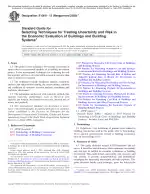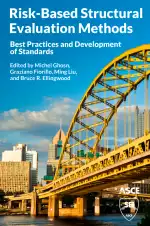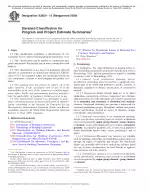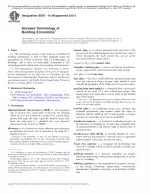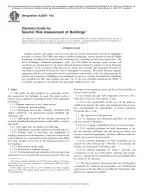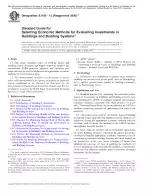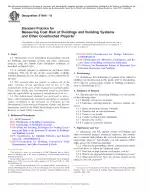ASTM E1369-15 (R2020)e1 PDF Download
Standard EN SampleStandard Guide for Selecting Techniques for Treating Uncertainty and Risk in the Economic Evaluation of Buildings and Building Systems
Also Known As:
The ASTM E1369-15 (R2020)e1 standard provides guidance on techniques for handling uncertainty and risk in the economic evaluation of building investment projects. The standard recognizes that long-lived projects like buildings are subject to uncertainties regarding factors such as project life, operation and maintenance costs, and revenues, making it challenging to make reliable economic evaluations.
Traditionally, economic evaluation methods have been applied to deterministic estimates of project input variables, without considering the uncertainty surrounding these estimates. This approach fails to provide decision-makers with sufficient information to assess the risk associated with investing in a project that may have outcomes different from expectations. Risk analysis is introduced as a body of theory and practice that helps decision-makers assess their risk exposures and risk attitudes to make informed investment decisions.
The standard defines uncertainty as a state of knowledge about variable inputs to an economic analysis, with certainty referring to known input values. Risk is defined as either risk exposure or risk attitude. Risk exposure refers to the probability of investing in a project that results in a less favorable economic outcome than desired or expected, while risk attitude relates to a decision-maker's willingness to take chances on investments of uncertain outcomes. Different decision-makers may have varying risk attitudes, which can affect the acceptability of a given investment.
The standard emphasizes that there is no single best technique for addressing uncertainty and risk in every situation. The selection of techniques depends on several factors, including data availability, resource constraints, computational aids, user understanding, ability to measure risk exposure and risk attitude, the level of risk exposure of the project, and the size of the investment relative to the institution's portfolio.
Some of the techniques recommended in the standard include breakeven analysis, sensitivity analysis, risk-adjusted discounting, the mean-variance criterion and coefficient of variation, decision analysis, simulation, and stochastic dominance. These techniques can be integrated with economic evaluation methods such as life-cycle cost analysis, net benefits, benefit-to-cost ratio, internal rate of return, and payback to facilitate a comprehensive assessment of the economic performance of building investment projects.
| Descriptors | building systems, breakeven analysis, decision analysis, probability distribution, sensitivity analysis, ,Building Economics,Building Structures,Cost Analysis,Statistical Analysis |
| ICS Codes | 91.010.20 - Contractual aspects |
| Language(s) | English |
| File Size | 348.2 KB |

